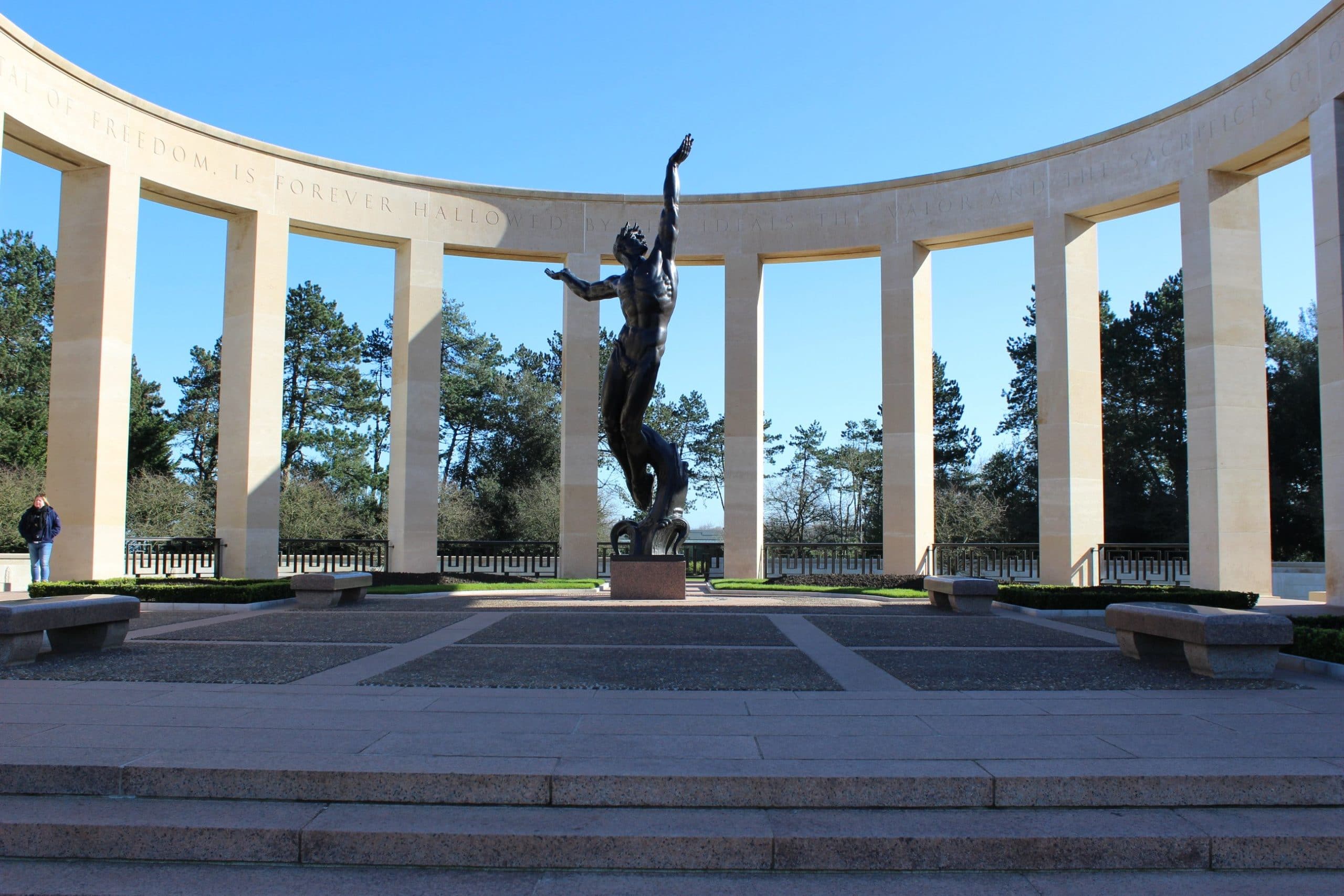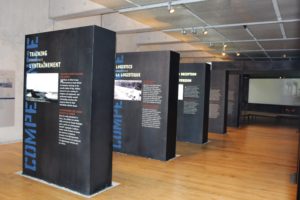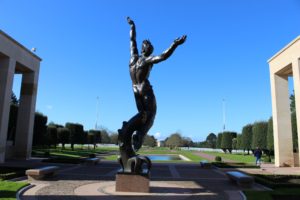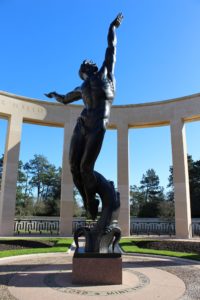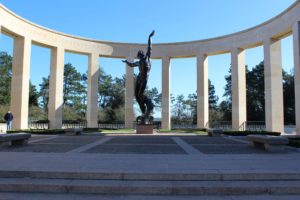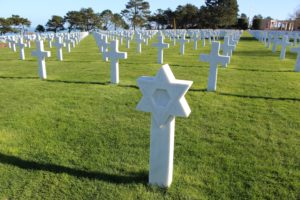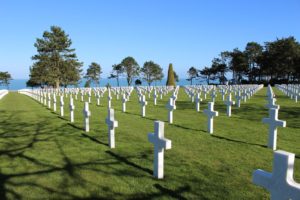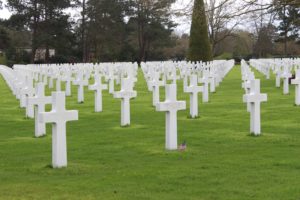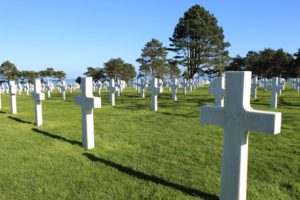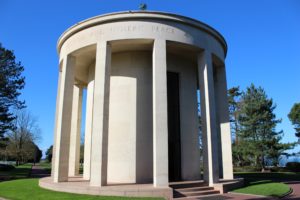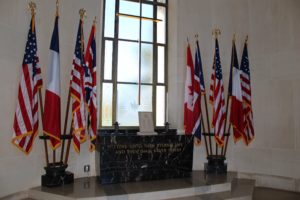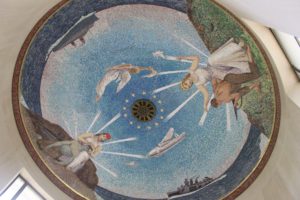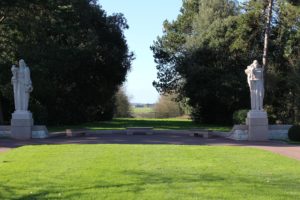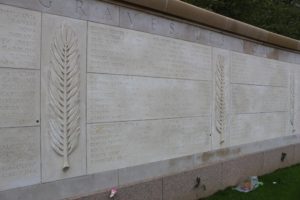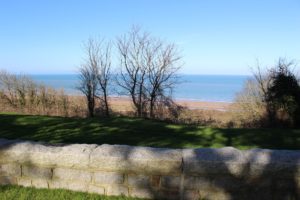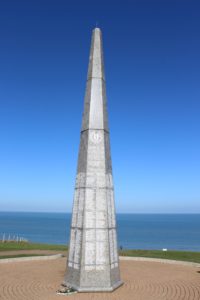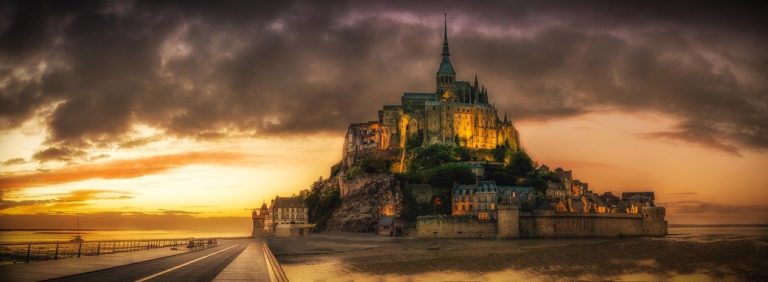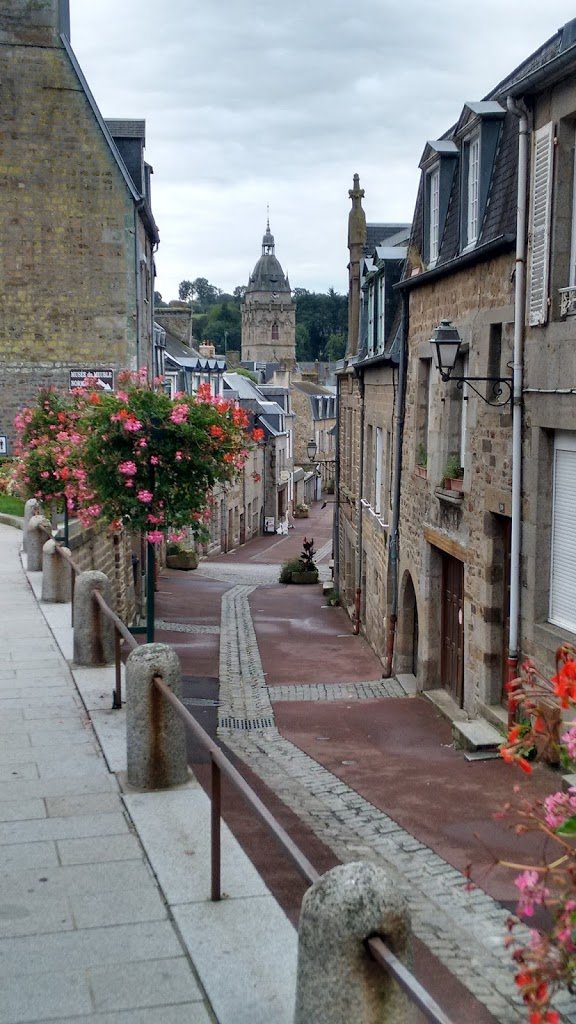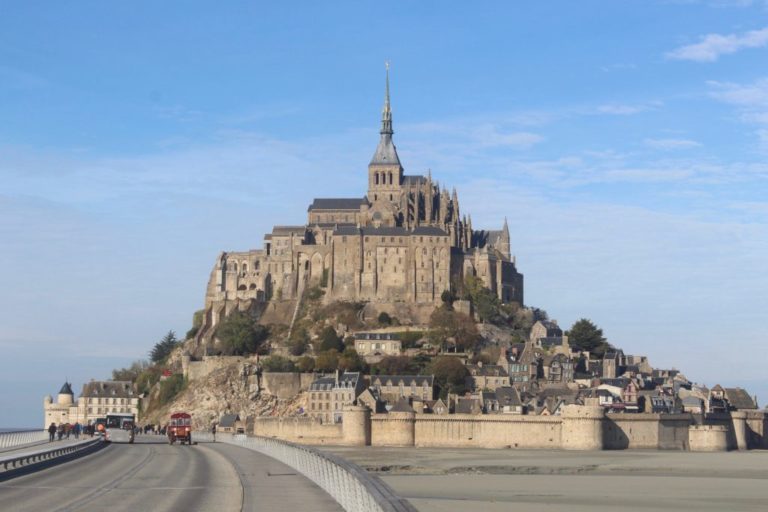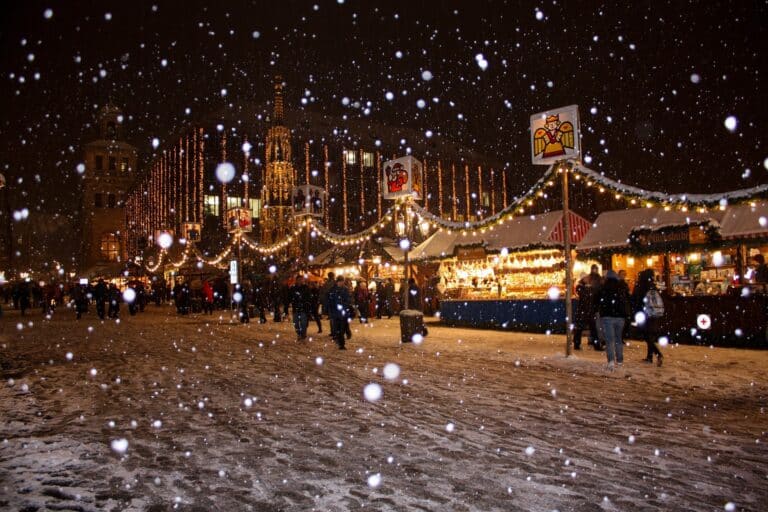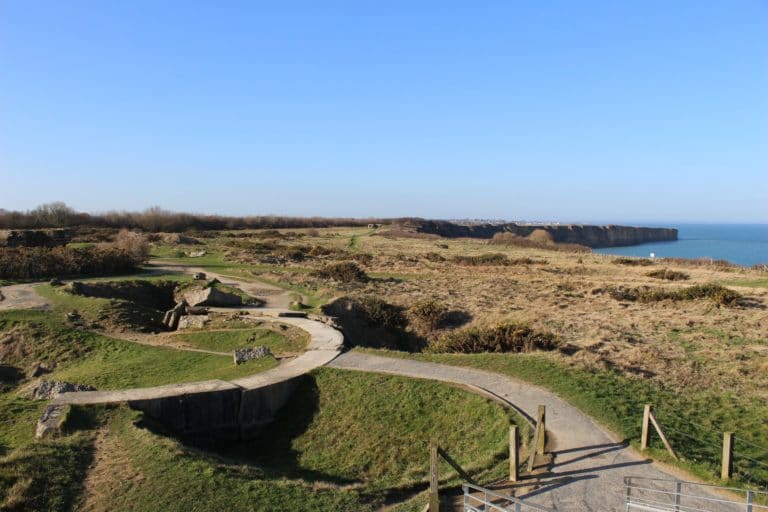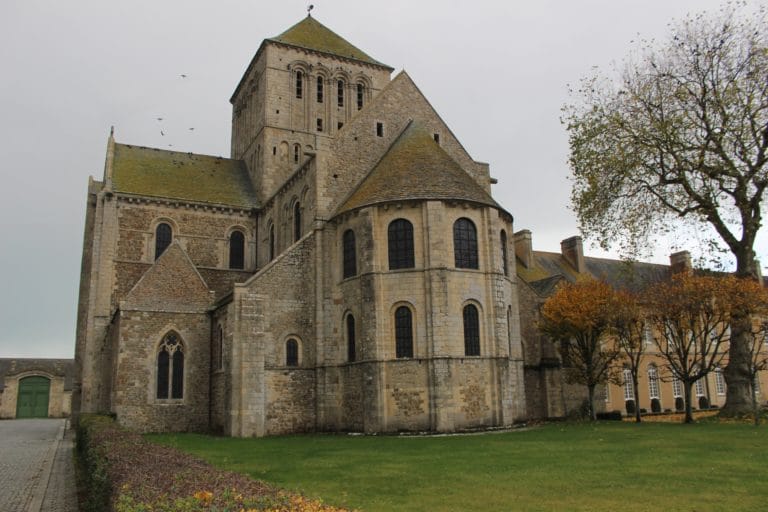A Visit To The Normandy American Cemetery
My visit to the Normandy American Cemetery and Memorial in Colleville-sur-Mer on a sunny February day is one of the most memorable days I’ve had. I spent the day visiting the Omaha beach area and the cemetery was my last port of call. I’d seen an aerial photo of the cemetery, I had printed out a map and knew that there were 9,387 graves on a site of over 170 acres. Despite all that, it literally took my breath away. The enormity of all those white headstones neatly lined up in an orderly and regimental way really hit home. Those incredibly brave men and women remain soldiers and heroes forever in their final resting place on Normandy soil.
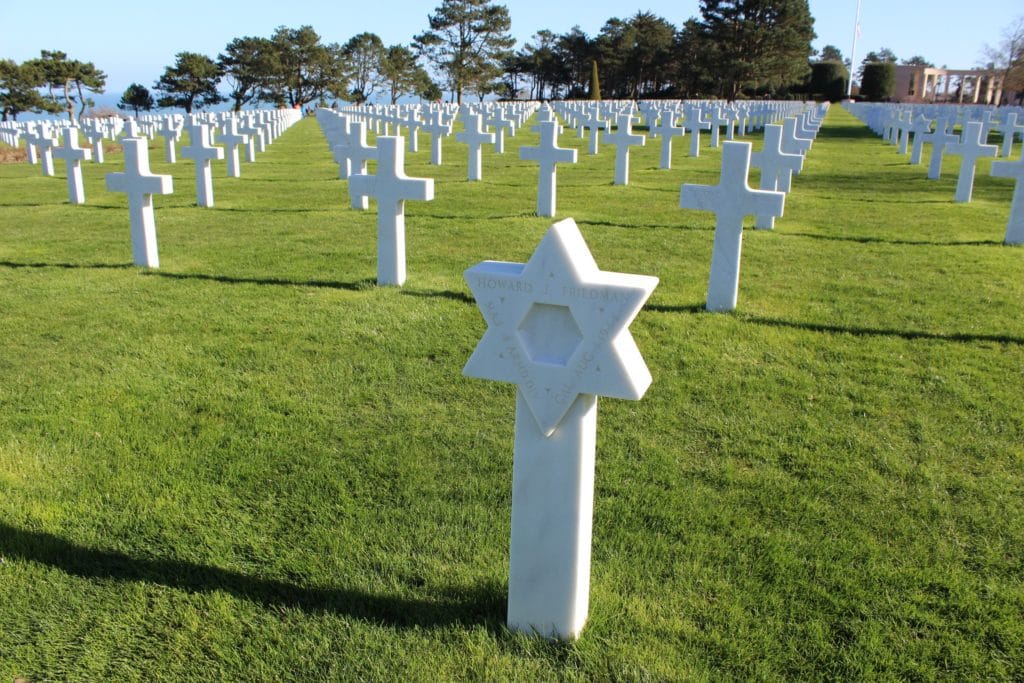
Introduction
The site is maintained by the American Battle Monuments Commission. They also manage La Pointe du Hoc and access to both sites is free and there is plenty of parking. There are also free guided tours in both French and English and the Visitor Centre has bilingual information. Check the American Battle Monuments Commission website for times. I got chatting to an English guide called Anthony who was really helpful and knowledgeable.
You can download a Normandy American Cemetery information leaflet which includes a map of the key places to visit.
The Visitor Centre
Alternatively, you can pick up a leaflet in the visitor centre which is located just next to the car park. It’s recommended that you go here first to put everything in context. However, I decided to leave the visitor centre until last. Most of the exhibits are on the lower ground floor including the theatre which shows an emotional film called ‘Letters’ in English with French subtitles every half hour.
The film tells the story of five American soldiers who lost their lives in WW2.
Other films run throughout the exhibition area on a continuous loop together with descriptive panels and displays of rations, medical equipment, uniforms and personal effects.
The Memorial
I walked down a side path to access the main site and the first thing I saw was the amazing memorial area. It is dominated by a 22 foot bronze statue called ’The Spirit of American Youth Rising from the Waves’. The sculpture looks towards the reflecting pool, the graves and the chapel. I arrived at lunchtime and the first thing that struck me was how quiet and peaceful the cemetery was. As I paused on the steps looking out towards the headstones, I felt as if a strong and courageous army stood before me. And as I wandered down the main path, gazing at the headstones on both sides, that feeling just grew. It seems strange to describe a cemetery as beautiful but it is a very fitting tribute to the fallen. The grounds are impeccably maintained and a feeling of calmness pervades as visitors pay their respects.
I’ve been back subsequently and although busier, the same feeling of peace and tranquility enveloped the cemetery. A group of American visitors walked past me, many of them carrying a single rose. It was a poignant moment with each of them lost in their own thoughts.
Locating A Grave
There are 10 plots of graves which are divided by a central mall. Each plot has a letter and each row is numbered enabling family and friends to locate the grave. Notable burials include:
- Lesley J. McNair, U.S. Army general, one of the two highest-ranking Americans to be killed in action in World War II (plot F, row 28, grave 42)
- Jimmie W. Monteith, Medal of Honor recipient (plot I, row 20, grave 12)
- Two of the Niland brothers, Preston and Robert. The film Saving Private Ryan told their story (plot F, row 15, graves11 and 12)
- Frank D. Peregory, Medal of Honor recipient (plot G, row 21, grave 7)
- Theodore Roosevelt, Jr., son of President Theodore Roosevelt, Medal of Honor recipient (plot D, row 28, grave 45)
- Quentin Roosevelt, son of President Theodore Roosevelt, aviator killed in action in World War I (plot D, row 28, grave 46)
The Chapel
The circular limestone and granite chapel is halfway down the main mall. The ceiling mosaic depicts America blessing her departing sons and France expressing its gratitude for freedom and peace.
At the far end of the cemetery are two statues representing America and France. They frame Vierville-sur-Mer’s church spire.
Next to the memorial is the Wall of the Missing upon which a further 1,557 names are inscribed for those who have no grave.
.
The cemetery overlooks Omaha Beach and an orientation table at the east end gives a panorama of the beach and the English Channel. The path leading down to the beach is currently out of bounds but it can be accessed via a road to the east of the cemetery. You’ll also find monuments to the 1st Infantry Division and the 5th Engineer Special Brigade here.
This video gives an overview of the cemetery. The scale of it is just incredible.
If you get the chance to visit the Normandy American Cemetery, do go. Despite the terrible events of 1944, I really would recommend it. It was my opportunity to pay my respects to the many brave soldiers who gave up their tomorrows and futures for us all.
